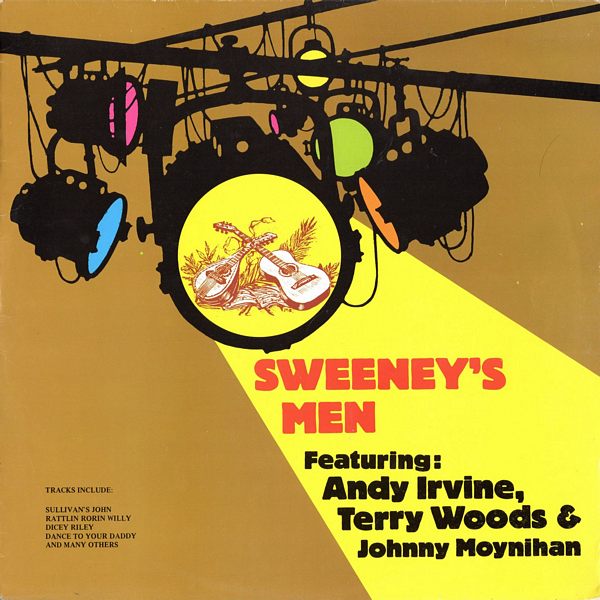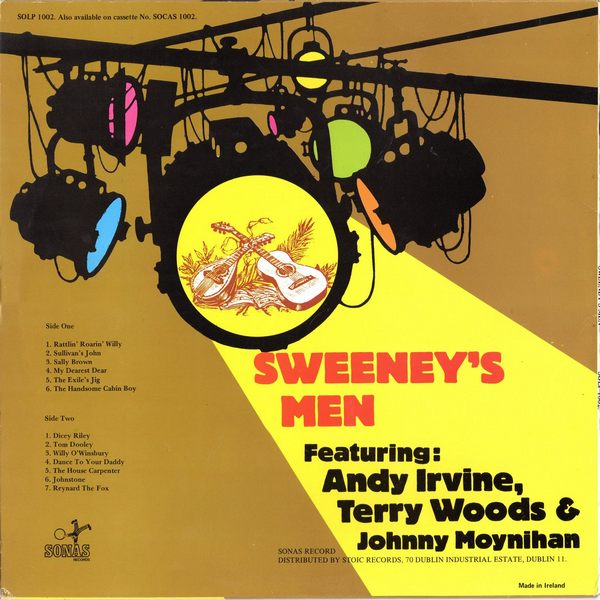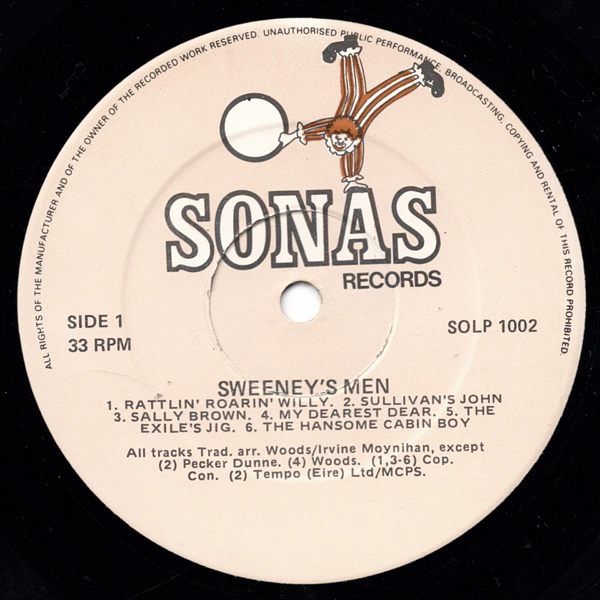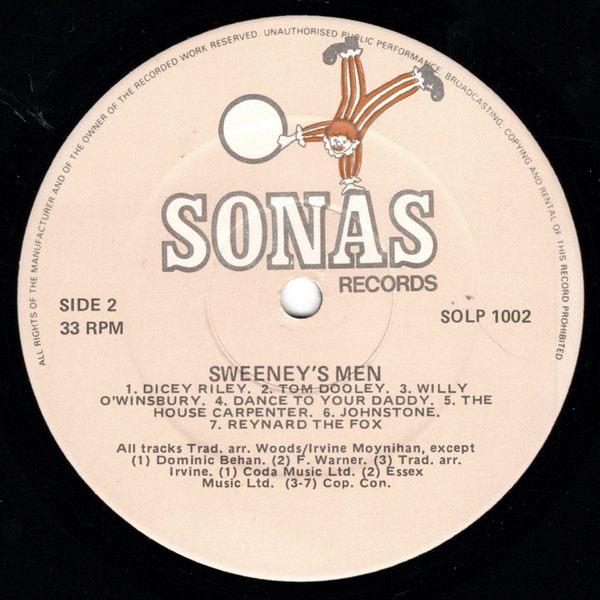- Sweeney's Men
- 1978 - Sonas SOLP1002 LP (IRL)
- Side One
- Rattlin' Roarin' Willy
- Sullivan's John (Pecker Dunne)
- Sally Brown
- My Dearest Dear (Terry Woods)
- The Exile Jig
- The Handsome Cabin Boy
- Side Two
- Dicey Riley (Dominic Behan)
- Tom Dooley (F. Warner)
- Willy O'Winsbury (Trad. Arr. Andy Irvine)
- Dance to Your Daddy
- The House Carpenter
- Johnstone
- Reynard the Fox
- Credits
- Tracks: Trad., Arr. by Woods, Irvine, Moynihan, unless otherwise noted.




